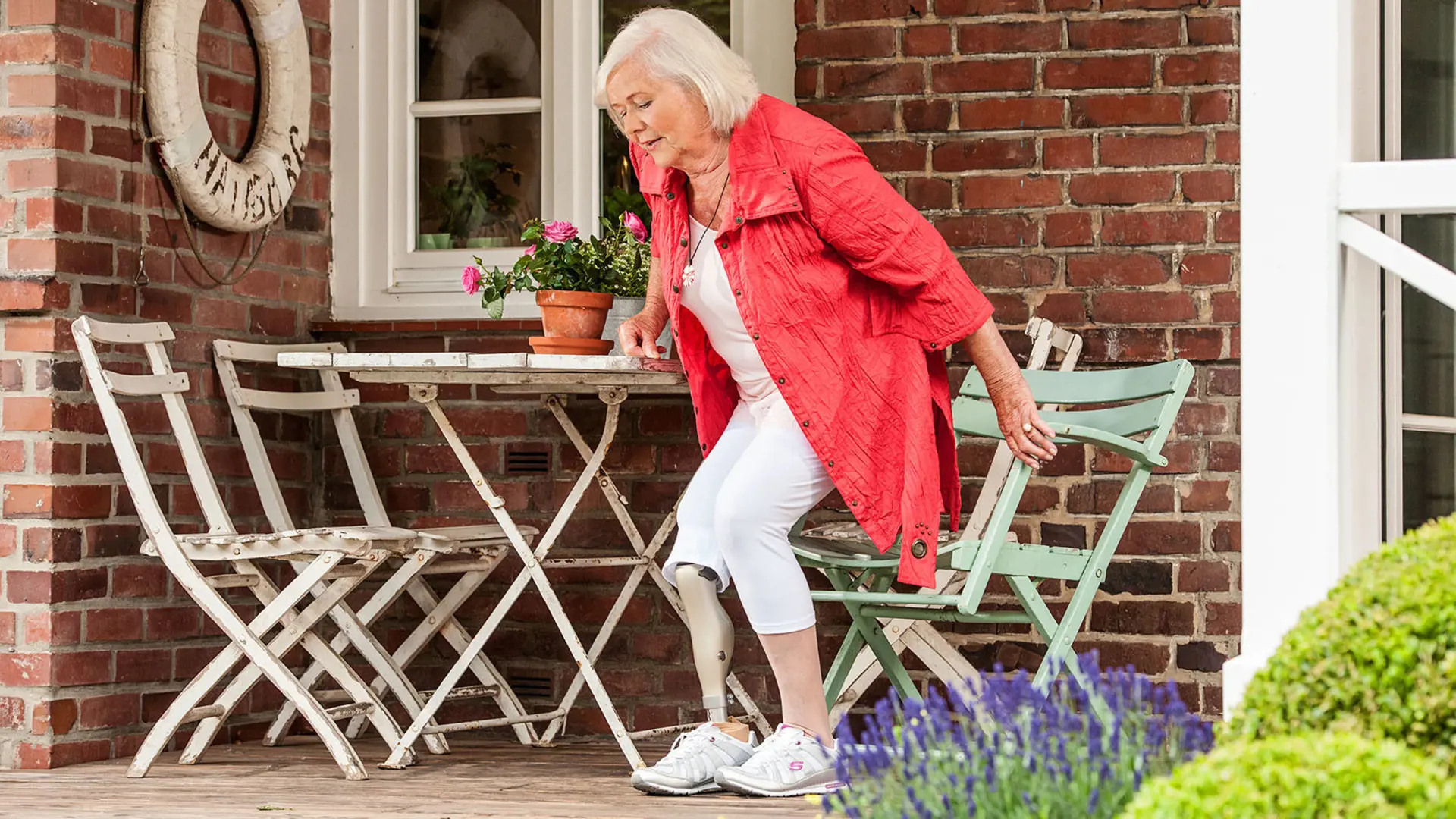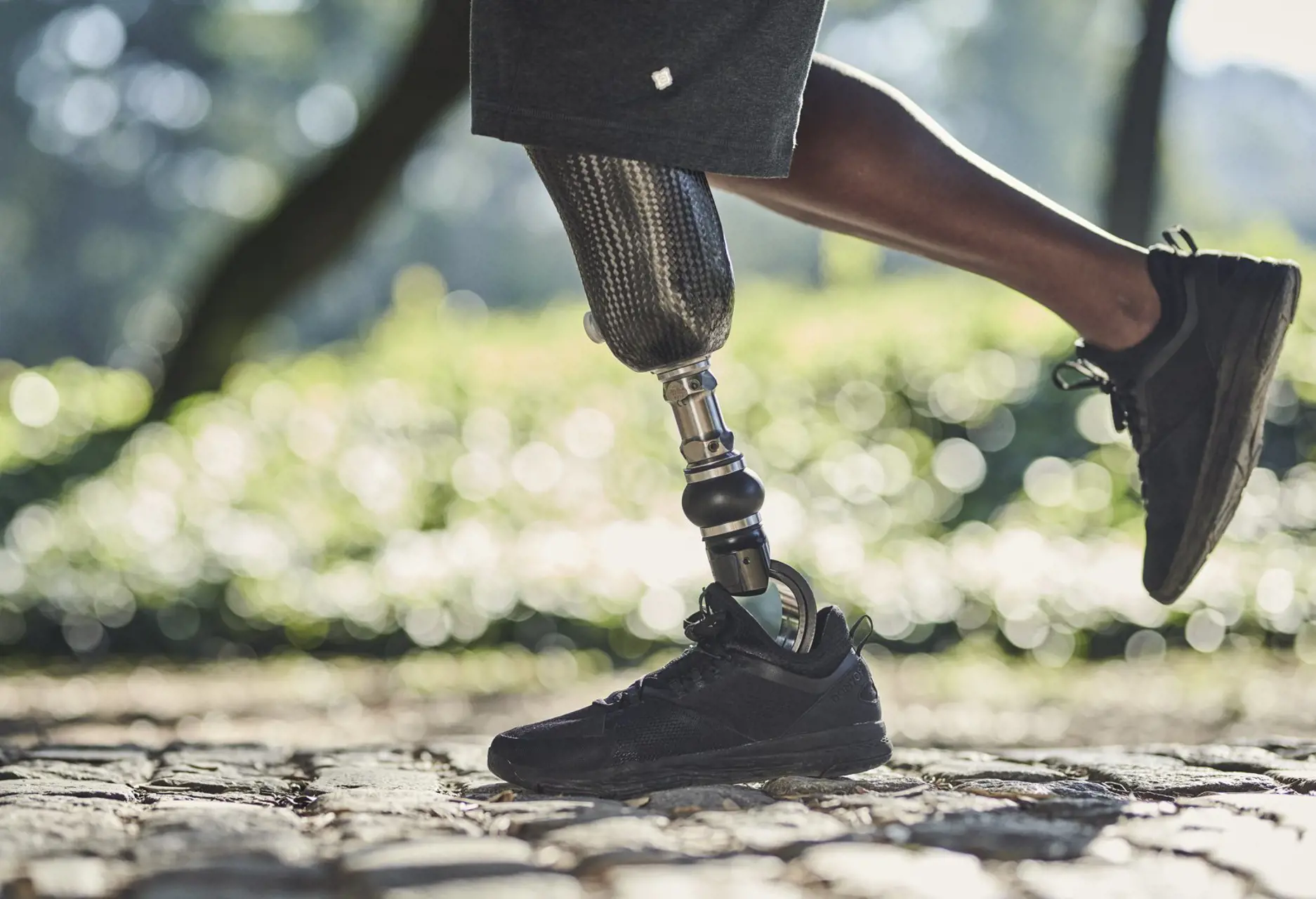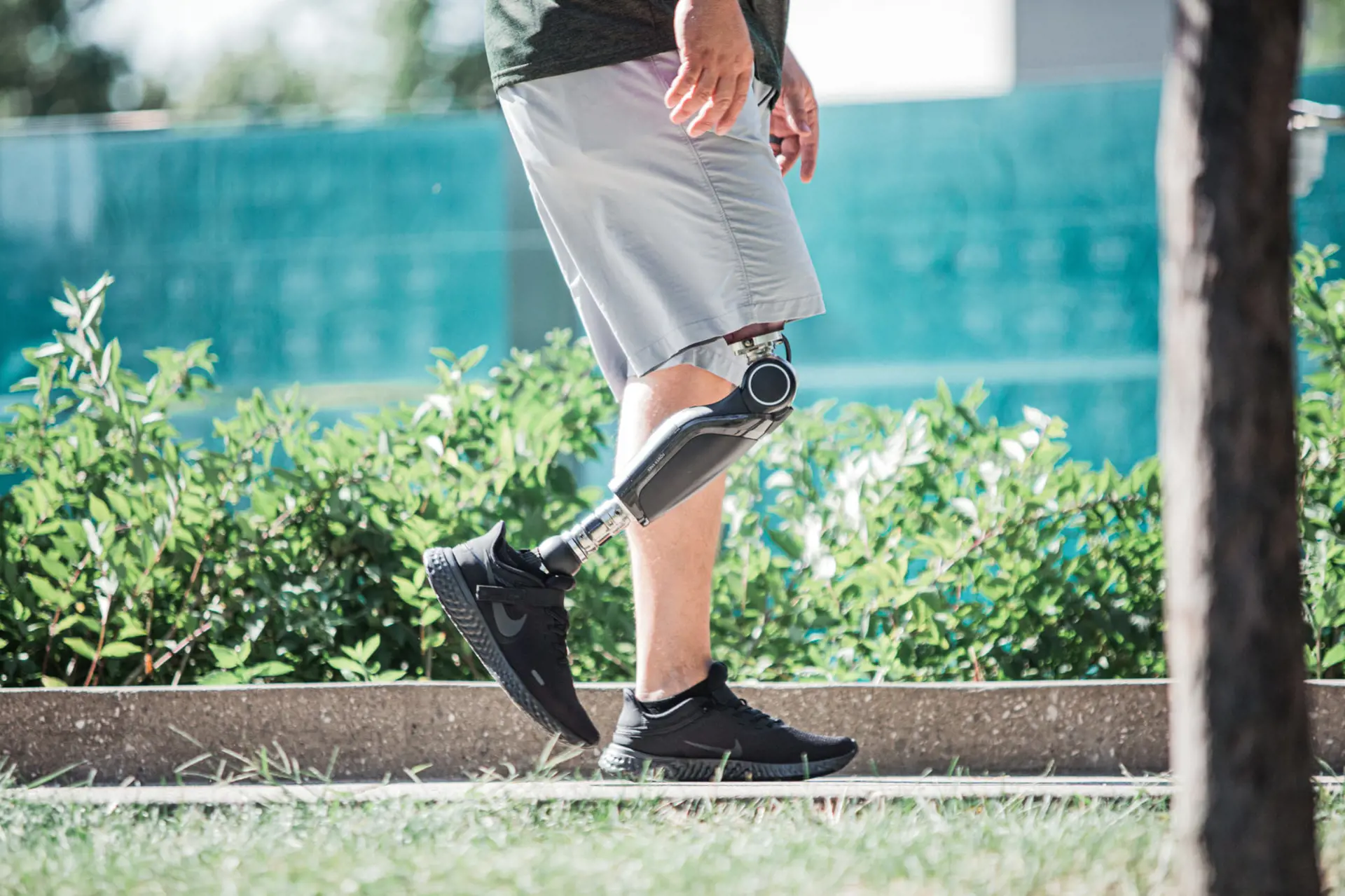Welcome To Amputee Care Center
powered by Spronken

Age and poor health can have a significant impact on your mobility and confidence. Learning to walk again with a prosthesis alone can be quite a challenge.
That’s why it’s important that you feel safe and comfortable and receive the right physical and mental support. Quality of life is therefore an important objective.
Leg prostheses for low active users are therefore constructed with special attention to safety and comfort, in and around the home. Examples include shock-absorbing prosthetic feet, rotation adapters, multi-axis prosthetic knees and/or secure suspension systems.
This group of users usually have less conscious control over their prosthesis, which means that we are able, certainly in the first instance, to offer a high level of stability with the prosthesis.
For highly active prosthesis users, the correct choice of customised prosthetic components is crucial as well.
These users often expect a bit more from their prosthesis, which means that the chosen components must deliver more performance.
When building the prosthesis, we take into account all activities that the user wishes to perform, as much as possible. This can be the absorption of rotational forces by rotation adapters or the absorption of impact by elements specifically developed for shock absorption.
Each product has its specific properties. During this search, it is therefore important that the different components can be tested.
We will be working with you to find the right product for your needs and requirements.


Contact us by completing the Contact Form or by calling +32 (0)470 500 888. We are at your service.
These days, the most innovative prosthetic parts are equipped with a microprocessor. This is like a small computer that optimises the functionality of the part in terms of stable and comfortable movement. These products are also called bionic products.
The most common microprocessor-controlled parts are prosthetic feet, knees or hands.
For example, this gives users of a prosthetic arm the option of using different, pre-programmed grips with their prosthetic hand.
Microprocessor-controlled prosthetic knees ensure a stable and energy-efficient gait pattern.
Bionic prosthetic feet allow a user to safely walk up and down a slope or a flight of stairs, without any issues.
Research has shown that the use of these parts has a strong positive influence on the quality of life.
Don’t wait and make an appointment with our specialists if you want to know more about whether you qualify for a microprocessor-controlled prosthesis!